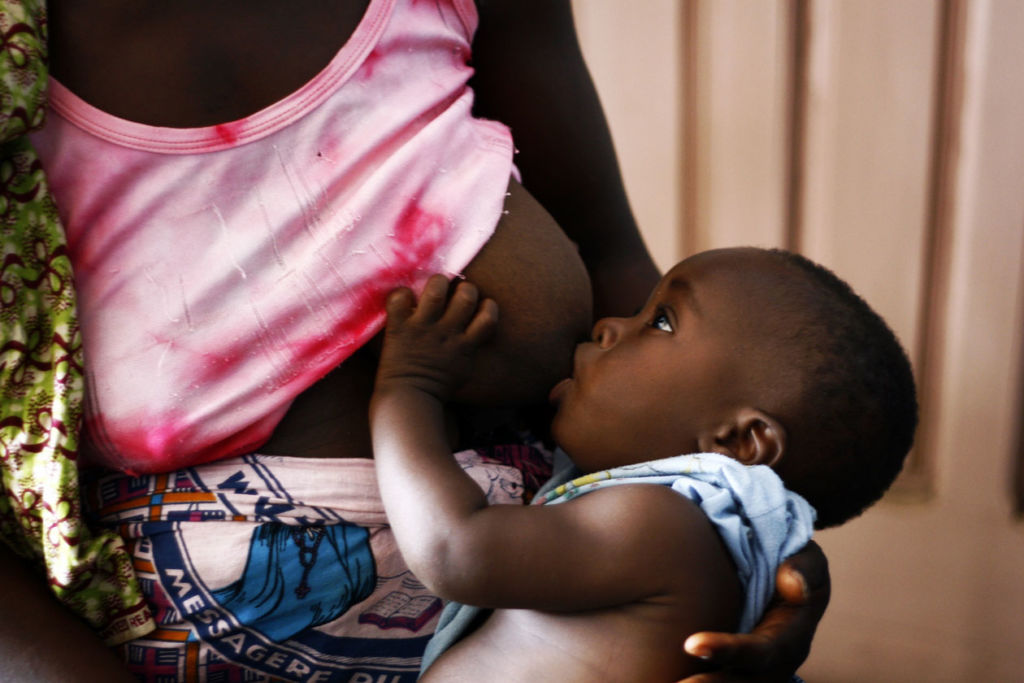[LUM#12] A treatment combining AIDS and breastfeeding
How can you breastfeed your child when you are HIV-positive without risking transmitting HIV? Philippe Van de Perre, who has been working on this difficult issue for more than 30 years, has developed a protocol that drastically reduce the risk of transmission via breast milk.

Every year, 160,000 newborns are infected with HIV, mainly in Africa. Although this is three times less than 20 years ago, it is still 160,000 too many for Philippe Van de Perre. In 1991, the virologist was the first to demonstrate that the virus can be transmitted from mother to child during breastfeeding. "We were monitoring 212 mothers and their babies in Rwanda, all of whom were HIV-negative at the time of delivery. Sixteen months later, 15 mothers had become HIV-positive, as had eight children." The only possible explanation was that HIV had been transmitted to the infants via breast milk.
Contamination through breast milk
"One-third of cases of infection in babies result from transmission of the virus during childbirth, and the other two-thirds during breastfeeding," explains Philippe Van de Perre. Without treatment, an infant breastfed by an HIV-positive mother has a 30% risk of contracting HIV. This is a major issue when we consider that without medical care, the mortality rate for infected children reaches 50% during their first year. Following these revelations,the World Health Organization decided to recommend that women infected with HIV avoid breastfeeding when a safe alternative is available. "This recommendation is impossible to implement in most African countries for various reasons, including cultural pressure, the cost of formula, and access to clean water," explains the specialist.
So how can HIV-positive women breastfeed their babies without risking infection? Initially, researchers began by giving mothers treatment designed to eliminate viral particles from breast milk. "Thanks to this treatment, in most cases we no longer detected the virus in the milk," explains Philippe Van de Perre. "But despite the maternal treatment, many children continued to contract HIV."
While researchers found that many breastfeeding mothers did not take their treatment scrupulously, which limited its effectiveness, this was not the only explanation. "We also found that, in addition to viral particles, breast milk contains cells infected with the virus that are not eliminated by antiretroviral treatment and can transmit the infection to infants," reveals Philippe Van de Perre.
No side effects
In light of this discovery, the virologist and his team are proposing a new therapeutic strategy: administering antiretroviral treatment directly to the baby, in addition to the treatment taken by the mother. "It's a simple pediatric syrup given to the child, the treatment is very well tolerated, and we haven't observed any side effects. And the results speak for themselves: with this new protocol, the infection rate in babies has dropped to less than 1%!"
Since December 2019, Philippe Van de Perre has been running a program in Zambia and Burkina Faso that is unique in the world, aimed at optimizing the prevention strategy recommended bythe WHO. During vaccination visits for newborns aged 6 to 8 weeks, researchers perform an AIDS screening test on all mothers and their babies. "If we discover that a mother is HIV-positive and her baby is not infected, we prescribe antiretroviral treatment for the mother, or we increase the dosage if she is already undergoing treatment. We also prescribe treatment for the child until the end of breastfeeding." This very early screening must be accompanied by an information campaign: "To be effective, the treatment must be followed correctly, so it is essential to inform the mother about the risk of infection for her baby if she stops the treatment."
This ongoing study is being closely monitored by the WHO, which may soon issue new official recommendations for this protocol to be implemented worldwide. "Between this 'catch-up' protocol and the new vaccination strategy currently being developed ( see box below), we can now envisage eliminating mother-to-child transmission of HIV."
Towards a "vaccination" strategy
They are called neutralizing monoclonal antibodies. "These are human antibodies that are capable of preventing HIV replication ," explains Philippe Van de Perre. A single injection of these antibodies could provide protection against possible infection for four to six months. "In regions of the world where HIV is highly prevalent, particularly among young women, we want to administer an injection of these antibodies to all newborns at birth and then at 4 months, 8 months, and 12 months if the child is still being breastfed."
This program also applies to babies whose mothers are not infected with HIV at birth: "If she contracts the virus while breastfeeding, the newborn is at very high risk. By giving an injection regardless of the mother's HIV status, we are protecting all children." This strategy, known as passive immunoprophylaxis, is already in phase 2 of testing to verify its tolerability in children.
Find UM podcasts now available on your favorite platform (Spotify, Deezer, Apple Podcasts, Amazon Music, etc.).